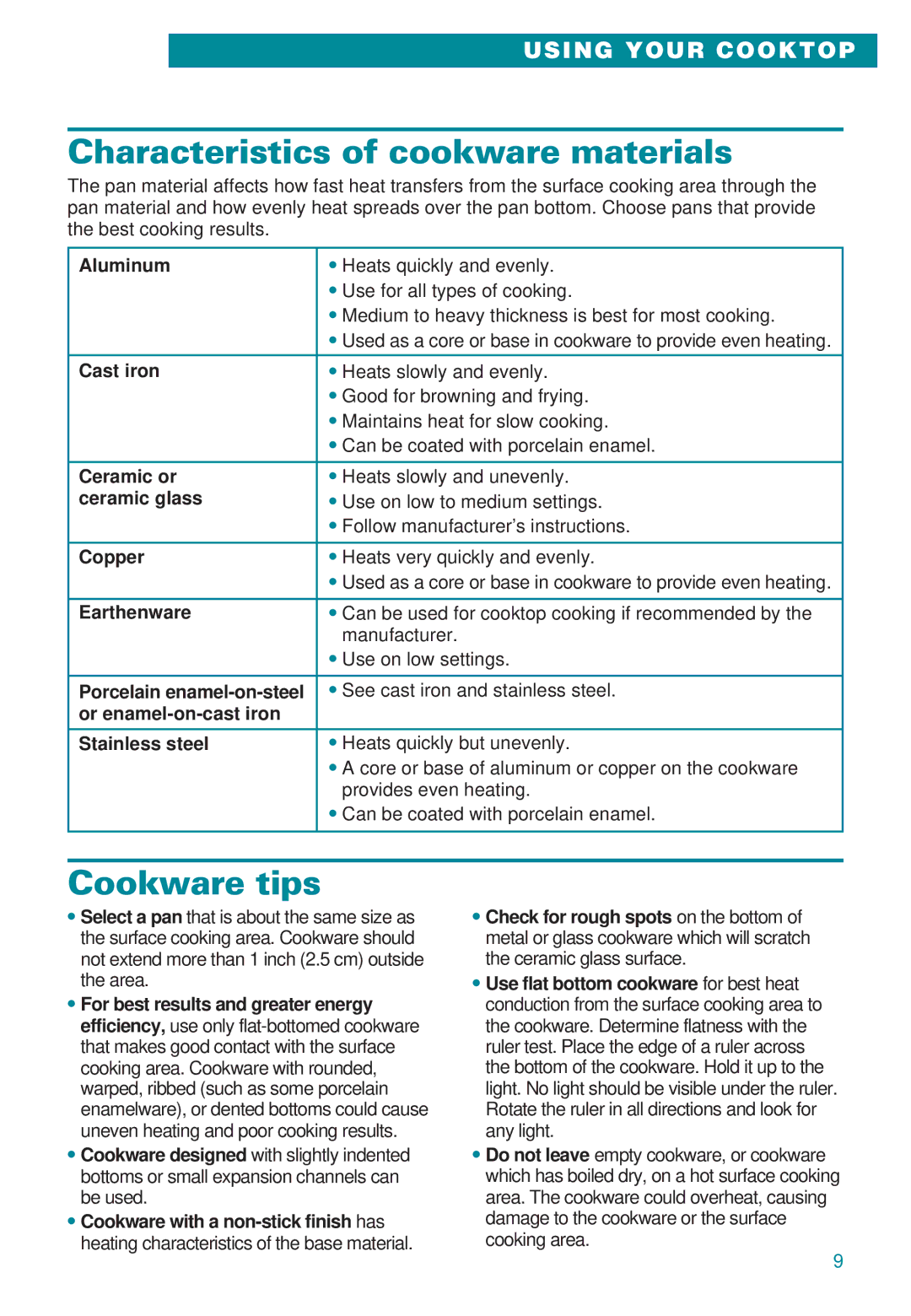
USING YOUR COOKTOP
Characteristics of cookware materials
The pan material affects how fast heat transfers from the surface cooking area through the pan material and how evenly heat spreads over the pan bottom. Choose pans that provide the best cooking results.
Aluminum | • Heats quickly and evenly. |
| • Use for all types of cooking. |
| • Medium to heavy thickness is best for most cooking. |
| • Used as a core or base in cookware to provide even heating. |
|
|
Cast iron | • Heats slowly and evenly. |
| • Good for browning and frying. |
| • Maintains heat for slow cooking. |
| • Can be coated with porcelain enamel. |
|
|
Ceramic or | • Heats slowly and unevenly. |
ceramic glass | • Use on low to medium settings. |
| • Follow manufacturer’s instructions. |
|
|
Copper | • Heats very quickly and evenly. |
| • Used as a core or base in cookware to provide even heating. |
|
|
Earthenware | • Can be used for cooktop cooking if recommended by the |
| manufacturer. |
| • Use on low settings. |
|
|
Porcelain | • See cast iron and stainless steel. |
or |
|
|
|
Stainless steel | • Heats quickly but unevenly. |
| • A core or base of aluminum or copper on the cookware |
| provides even heating. |
| • Can be coated with porcelain enamel. |
|
|
Cookware tips
•Select a pan that is about the same size as the surface cooking area. Cookware should not extend more than 1 inch (2.5 cm) outside the area.
•For best results and greater energy efficiency, use only
•Cookware designed with slightly indented bottoms or small expansion channels can be used.
•Cookware with a
•Check for rough spots on the bottom of metal or glass cookware which will scratch the ceramic glass surface.
•Use flat bottom cookware for best heat conduction from the surface cooking area to the cookware. Determine flatness with the ruler test. Place the edge of a ruler across the bottom of the cookware. Hold it up to the light. No light should be visible under the ruler. Rotate the ruler in all directions and look for any light.
•Do not leave empty cookware, or cookware which has boiled dry, on a hot surface cooking area. The cookware could overheat, causing damage to the cookware or the surface cooking area.
9
